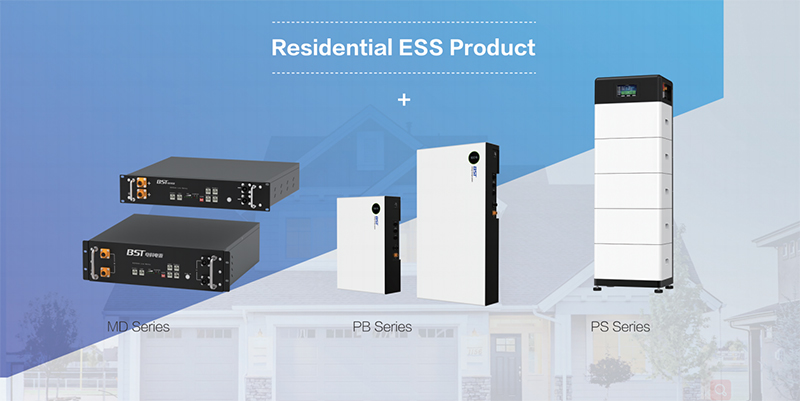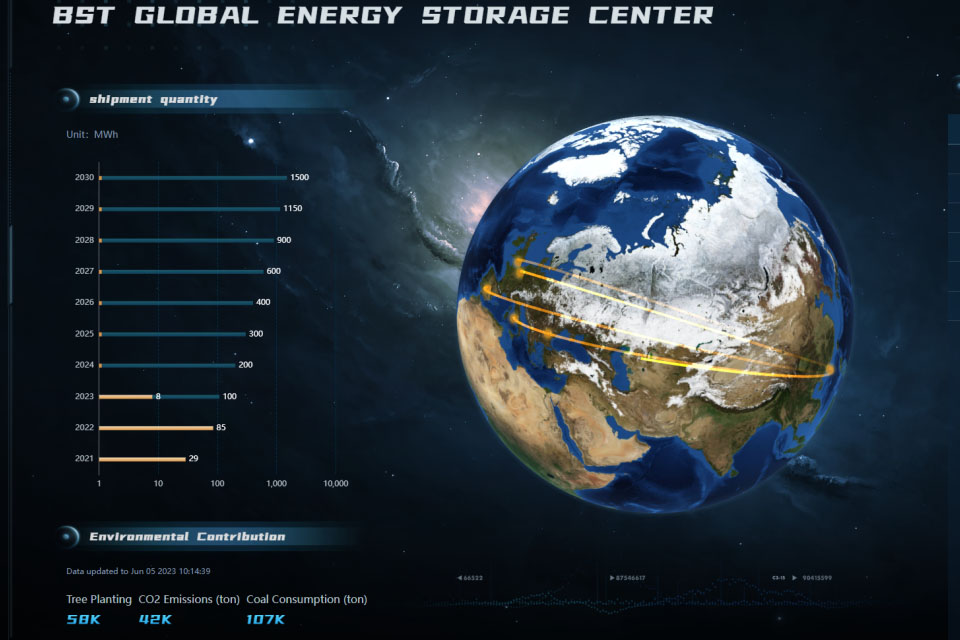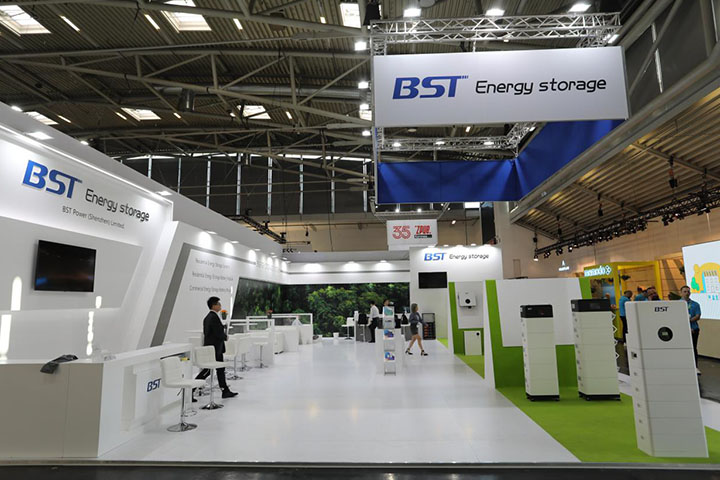Introduction
Lithium-ion batteries have transformed the modern world. From smartphones to electric vehicles and solar storage systems, they are the powerhouse behind our mobile and sustainable lifestyle. Among the many types of lithium batteries, 18650 and 26650 cells stand out as two of the most widely used cylindrical cell formats.

But which one is better?
In this guide, we’ll dive deep into the differences between 18650 and 26650 batteries. We’ll compare their size, capacity, discharge rate, applications, safety, and even future market prospects. Whether you’re a manufacturer, engineer, or end-user, this article will help you make an informed decision.
What is a 18650 Battery?
A 18650 battery is a cylindrical lithium-ion rechargeable cell measuring 18mm in diameter and 65mm in length. It has been a market standard for over a decade and is used in a vast range of electronic devices.
🔋 Technical Specifications:
- Nominal Voltage: 3.6V–3.7V
- Capacity: 1800mAh – 3600mAh
- Chemistry: Lithium-ion or LiFePO4
- Typical Weight: 45g
- Maximum Continuous Discharge: 5A – 20A (depending on model)
- Cycle Life: 300 – 1000 cycles (Li-ion); 2000+ for LiFePO4
- Common Brands: Samsung, LG, Panasonic, Sony
🔧 Key Applications:
- Laptops and notebooks
- LED flashlights
- Power banks
- Electric scooters and skateboards
- Medical monitoring equipment
- Vaping devices
- Home appliances (robot vacuums, emergency lighting)
Its compact form factor and high energy density make the 18650 battery ideal for portable electronics that require reliability and safety.
What is a 26650 Battery?
The 26650 battery is a larger cylindrical lithium battery, measuring 26mm in diameter and 65mm in length. While physically similar in shape to the 18650, the 26650 offers significantly higher capacity and current output.
🔋 Technical Specifications:
- Nominal Voltage: 3.6V–3.7V
- Capacity: 4000mAh – 6000mAh
- Chemistry: Li-ion or LiFePO4
- Typical Weight: 90g
- Maximum Continuous Discharge: 10A – 30A
- Cycle Life: 1000 – 3000+ cycles
- Common Brands: A123 Systems, BST Power, EVE, Keeppower
🔧 Key Applications:
- Solar energy storage systems
- Electric bikes and scooters
- Power tools (drills, grinders, saws)
- Flashlights and torches
- Home backup energy systems
- Industrial UPS power systems
- Marine and RV batteries
Because of its high capacity, the 26650 is perfect for energy-demanding applications and long runtime requirements.
Comparison: 18650 vs. 26650
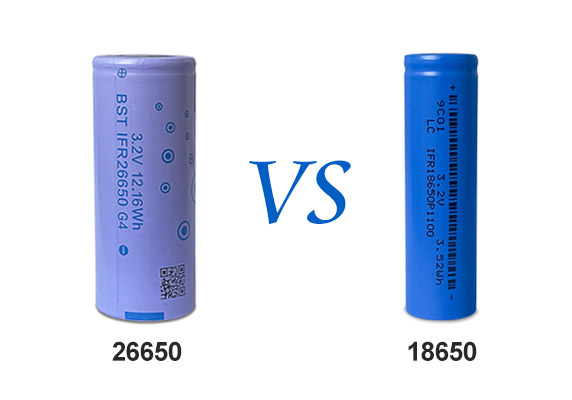
| Feature | 18650 Battery | 26650 Battery |
|---|---|---|
| Size | 18mm x 65mm | 26mm x 65mm |
| Capacity | 1800mAh – 3600mAh | 4000mAh – 6000mAh |
| Weight | ~45g | ~90g |
| Current Output | Moderate (5A – 20A) | Higher (10A – 30A) |
| Cycle Life | 300 – 1000 cycles | 1000 – 3000+ cycles |
| Chemistry Options | Li-ion / LiFePO4 | Li-ion / LiFePO4 |
| Energy Density (Wh/kg) | Higher (compact devices) | Lower due to size but total capacity is higher |
| Cost (per cell) | Lower | Slightly higher |
| Heat Management | Moderate | Better, especially with LiFePO4 |
| Best Use Case | Compact electronics | High-drain, long runtime systems |
Similarities Between 18650 and 26650
Despite their physical differences, both batteries share several features:
- Rechargeable lithium-based chemistry
- Nominal voltage of 3.6V–3.7V
- Can be protected or unprotected cells
- Available in Li-ion and LiFePO4 variants
- Cylindrical shape, suitable for battery packs
- Used in modular and scalable energy systems
Both are widely used in B2B (industrial, OEM) and B2C (consumer electronics) markets.
Which Battery Is Better?
The choice depends on your application needs.
| If You Need… | Go For… |
|---|---|
| Smaller size and lower cost | 18650 |
| Higher capacity and runtime | 26650 |
| Better energy density per gram | 18650 |
| More cycles and high drain | 26650 (LiFePO4) |
| Cost-effective mass production | 18650 |
| Storage for solar or backup power | 26650 |
Market Trends and Future Outlook
📈 18650 Market Insights:
- Dominates consumer electronics and DIY battery packs
- Still widely used in laptops, flashlights, e-bikes
- Facing pressure from newer 21700 cells (Tesla’s battery of choice)
- Expect moderate growth, especially in low-cost, portable solutions
📈 26650 Market Insights:
- Strong growth in renewable energy storage and power tools
- More commonly used with LiFePO4 chemistry due to thermal stability
- Growing demand from solar ESS, RVs, and telecom base stations
- OEMs are investing in high-capacity, safe battery solutions, boosting 26650 usage
🔮 Future Forecast:
- The 18650 will remain dominant in small devices
- The 26650 is poised to grow rapidly in home energy storage systems, AGVs, UPS, and marine applications
- LiFePO4 26650s will be a key component in the transition to low-carbon and sustainable energy systems
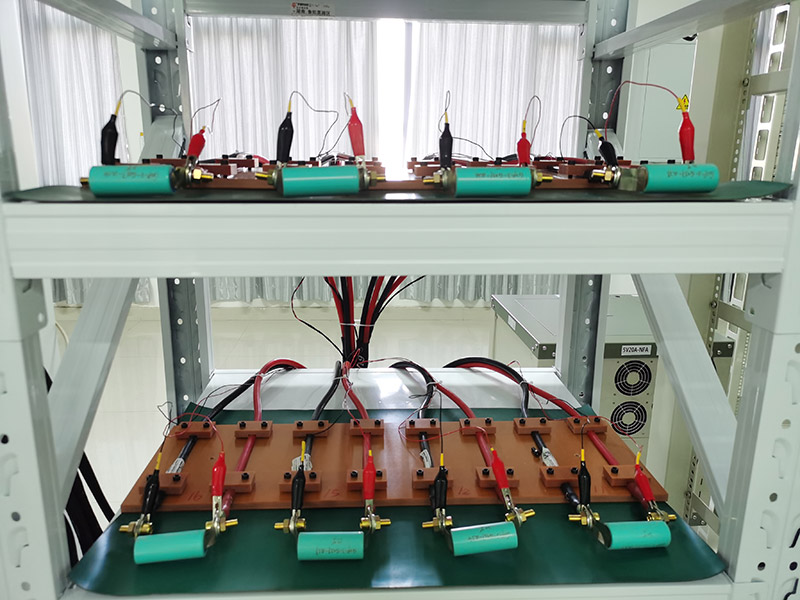
10-FAQ: 18650 vs 26650
1. Can I use a 26650 instead of a 18650?
Only if your device can physically accommodate the larger size and voltage/current requirements match.
2. Are 26650 batteries always better than 18650?
Not always. 26650s are better for high-power and long-runtime applications, but 18650s are more suitable for compact, lower-drain devices.
3. Which battery has a better cycle life?
LiFePO4 versions of 26650 often last longer—up to 3000+ cycles.
4. Which is more expensive?
26650 batteries are typically 10%–25% more expensive, depending on capacity and brand.
5. What’s the most common use for 18650?
Laptops, power banks, flashlights, and compact gadgets.
6. Are 26650 batteries good for solar storage?
Yes. Their higher capacity and thermal stability make them ideal for solar ESS and off-grid storage.
7. Are both batteries safe?
Yes, if you choose reputable brands and use proper protection circuits. LiFePO4 chemistry adds another layer of safety.
8. Can both be used in series/parallel packs?
Absolutely. Both types are modular and can be combined into large packs, just ensure proper BMS (Battery Management System).
9. Are 18650 batteries still being made?
Yes, extensively. Despite newer formats, the 18650 market is still strong and widely supported.
10. Which battery will dominate the future?
Each has its own niche. 18650 will remain in compact electronics, while 26650, especially LiFePO4, will dominate in energy storage and industrial uses.
Conclusion
In the battle of 18650 vs 26650, there is no clear winner—only the right tool for the right job.
- For compactness, affordability, and widespread availability, the 18650 is unbeatable.
- For power, performance, and long-term storage, the 26650 is the better option—especially when paired with LiFePO4 chemistry.
As the demand for safe, long-lasting, and high-performance batteries continues to grow in 2025 and beyond, both these formats will remain essential in different sectors of the global battery ecosystem.
